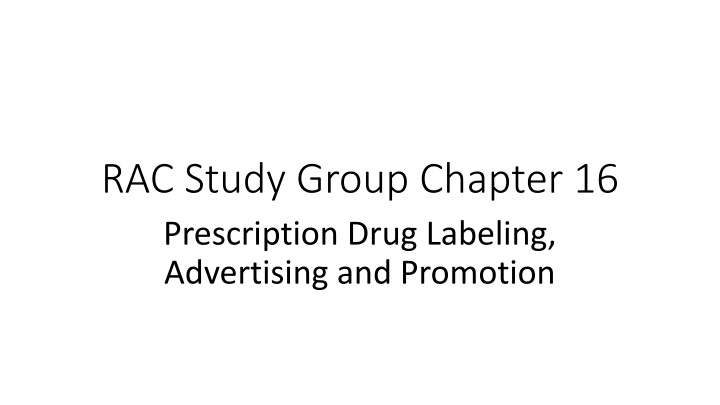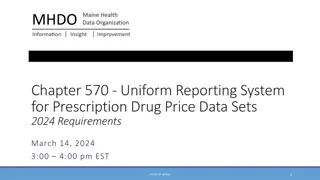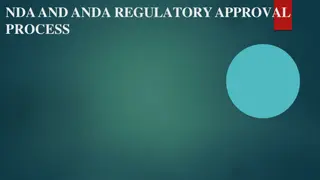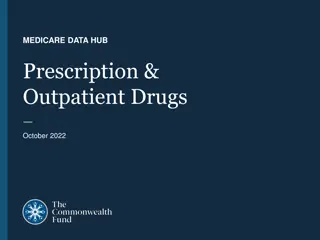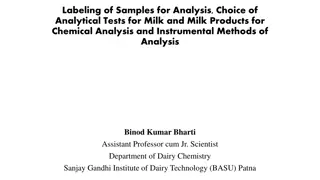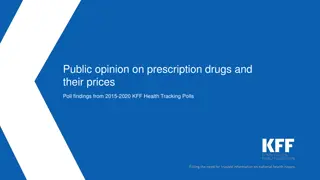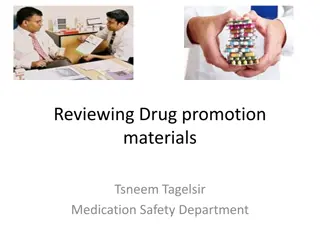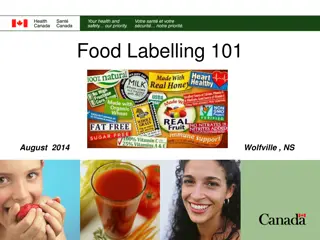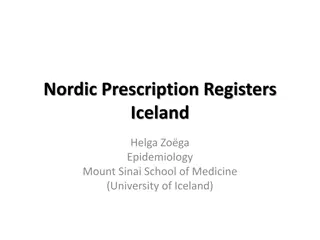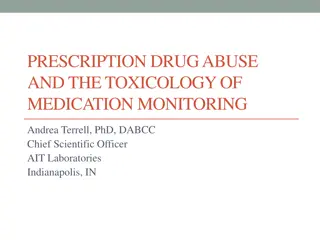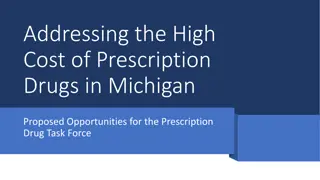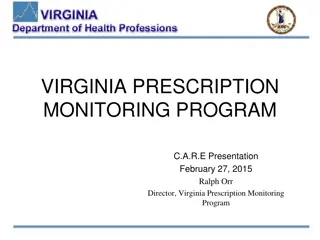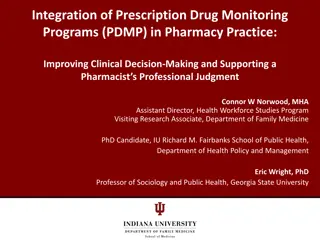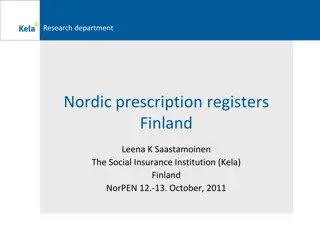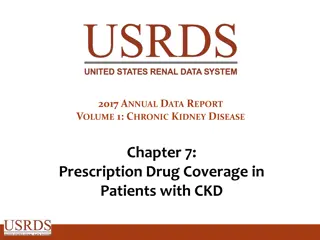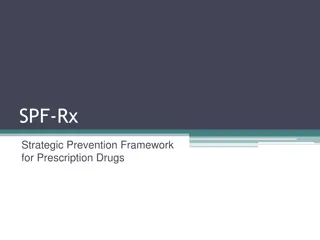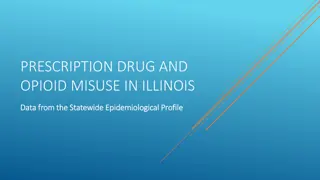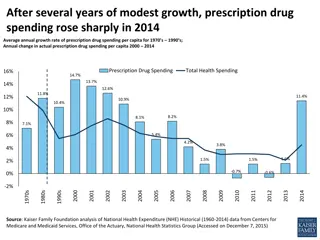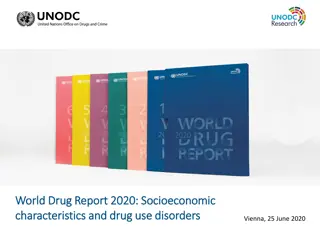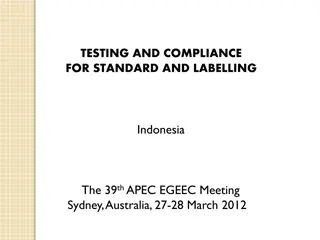Prescription Drug Labeling and Promotion Regulations
Defines and covers various aspects of drug labeling, advertising, and promotion, including FDA requirements, labeling types, and regulations under Title 21 of the Code of Federal Regulations. Details on professional and patient labeling, promotional materials, and Physician Labeling Rule (PLR) are discussed with key requirements and formats outlined.
Download Presentation

Please find below an Image/Link to download the presentation.
The content on the website is provided AS IS for your information and personal use only. It may not be sold, licensed, or shared on other websites without obtaining consent from the author.If you encounter any issues during the download, it is possible that the publisher has removed the file from their server.
You are allowed to download the files provided on this website for personal or commercial use, subject to the condition that they are used lawfully. All files are the property of their respective owners.
The content on the website is provided AS IS for your information and personal use only. It may not be sold, licensed, or shared on other websites without obtaining consent from the author.
E N D
Presentation Transcript
RAC Study Group Chapter 16 Prescription Drug Labeling, Advertising and Promotion
Labels and Labeling label - defined in the act as a display of written, printed or graphic material on the immediate container of a drug labeling is a broader term encompassing any written, printed or graphic material on the drug product, any of its containers or wrappers or any material issued in association with the drug
Labeling FDA-approved professional labeling (information for healthcare professionals about approved uses of the drug), also referred to as the prescribing information or the package insert (PI) FDA-approved patient labeling (drug information directed to patients) for some drug products with serious risk(s) in the form of a Medication Guide Promotional labeling any material containing information intended to promote the use of the drug. Even oral statements by sales representatives are subject to regulation by FDA as promotional labeling. Unlike the PI and patient labeling, promotional labeling is disseminated by a company without a specific approval of the materials by FDA.
Title 21 of the Code of Federal Regulations (CFR) Part 201 Manufacturer, packager or distributor s name and address (21 CFR 201.1) Location of National Drug Code (NDC) numbers (requested but not required) (21 CFR 201.2) (note: the determination of NDC numbers is included in 21 CFR 207.35) Statement of ingredients (21 CFR 201.10), including required warning statements for specific ingredients (e.g., FD&C Yellow No. 5 (21 CFR 201.20)) Location of expiration date (21 CFR 201.17) and significance of control numbers (21 CFR 201.18) Bar code label requirements (21 CFR 201.25) Statement of identity (21 CFR 201.50) Declaration of net quantity of contents (21 CFR 201.51) Statement of dosage (21 CFR 201.55)
Additional 201 Subpart C has the requirements for Over the Counter (OTC) products Subpart G has requirements for specific products like hormones, sprays and powders FDAAA added safety update requirements
Physician Labeling Professional labeling, or package insert Compilation of product information based on FDA s comprehensive review of the sponsor s approved NDA/BLA Adequate directions for use, written to direct healthcare professionals use of a drug product Amended in 2006 with the Physician Labeling Rule (PLR) Standard format with 3 main sections Requires inclusion of contact information for adverse events reporting Multiple FDA guidances to assist Sponsors Specific font requirements and rules for amendments Structured Product Labeling (SPL) is the electronic format for markups
Prescription Drug Promotion Office of Prescription Drug Promotion, or OPDP (formerly the Division of Drug Marketing, Advertising and Communications, or DDMAC) Regulations covering prescription drug promotion are found in 21 CFR 202 and are cross-referenced to 21 CFR 201 Administrative tools include Notice of Violation letters (NOV), or Untitled Letters; issuing Warning Letters; ordering a recall; and calling for the delay, suspension or withdrawal of a product approval, or issuance of Dear Doctor Letter Judicial tools barely used Bad Ad program
Advertisement and Promotion Requirements 21 CFR 312.7 shall not represent in a promotional context that an investigational new drug is safe or effective for the purposes for which it is under investigation. Must submit at time of dissemination, except subpart H 30 days prior to dissemination and those released within 120 days of approval, must be submitted prior to approval Regulations require the most prominent mention of the brand name to be accompanied by the generic name in letters at least half as large as the letters comprising the proprietary name or designation with which it is joined
Advertisement and Promotion Requirements Risk information must have comparable prominence to the promotional claims = Fair Balance No off label claims can be promoted Section 114 of the Food and Drug Administration Amendments Act of 1997 (FDAAA) provides for a legal mechanism to allow the promotion of pharmacoeconomic claims less stringent requirements Prescription drug advertising contain True statement of information in brief summary relating to side effects, contraindications, and effectiveness (21 CFR 202.1(e)). Promotional labeling that is not an advertisement (or reminder labeling, as described below) must be disseminated with a copy of the FPI Reminder advertising not as stringent, not allowed for black box products
Advertisement and Promotion Requirements The PhRMA Code, which is a voluntary non-regulatory standard, prohibits distribution of non-educational and practice-related promotional materials, including such reminder items as pens, notepads and mugs with product logos on them, even if the item is of minimal value and related to the healthcare professional s work or for the benefit of the patient Help-seeking advertisement is intended to inform consumers about a specific medical condition and encourage them to talk to their healthcare professionals about the condition Neither bulk-sale drugs nor compounding drugs are permitted to make safety or efficacy claims
Direct-To-Consumer (DTC) Advertising Television and radio must include a major statement of the product s primary risks A similar guidance is available for restricted medical devices Required You are encouraged to report negative side effects of prescription drugs to the FDA. Visit www.fda.gov/Safety/MedWatch/default.htm, or call 1-800-FDA-1088 No social media guidance available, still discussing education versus promotion FDA works with other agencies such as the US Attorney s Office and OIG in prosecuting companies alleged to be in violation of the FCA (False Claims Act) or Anti-Kickback Statute through off-label promotion
In Summary All drug labeling, including container labels, package inserts, patient labeling, Medication Guides and promotional labeling (including oral statements), is subject to FDA regulation FDA monitors prescription drug advertising and promotion through the OPDP. No drug can be promoted until the NDA has been approved by FDA All promotional materials must include a fair balance of efficacy and risk information, with the exception of reminder labeling (not allowed for products with a Boxed Warning). Broadcast advertisements must include a major statement of risk All non-reminder promotional materials must be accompanied by the full prescribing information; advertisements require an accompanying brief summary of the FPI. Broadcast advertisements must include adequate provision for the dissemination of the approved labeling
